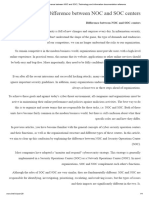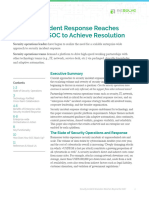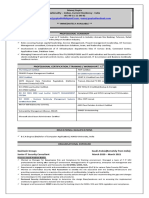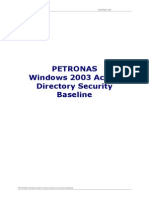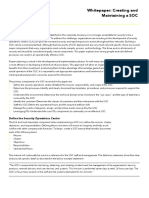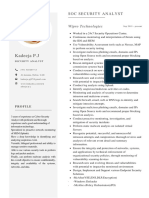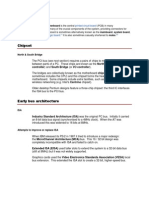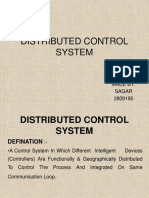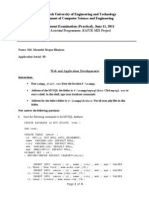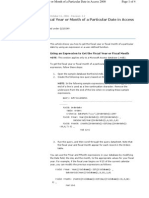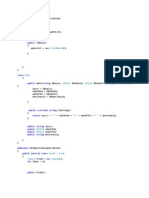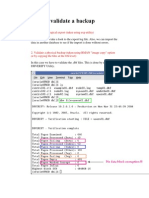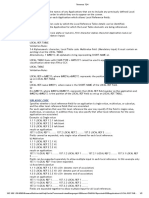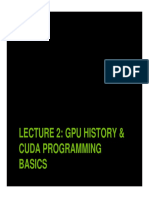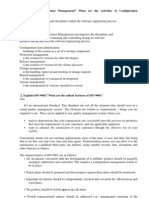50% found this document useful (2 votes)
257 views3 pagesSOC Engineer Training Guide
The document discusses the content of a SOC Engineer training course from Koenig. The course is suited for those seeking a career in cybersecurity, such as information security managers, SOC analysts and engineers, and IT professionals. The course covers key topics including SOC concepts, SIEM, log management, incident response plans, incident handling steps, and developing effective incident response teams. It aims to provide advanced skills for combating sophisticated cyber threats.
Uploaded by
NETRICH IT SolutionsCopyright
© © All Rights Reserved
We take content rights seriously. If you suspect this is your content, claim it here.
Available Formats
Download as DOC, PDF, TXT or read online on Scribd
50% found this document useful (2 votes)
257 views3 pagesSOC Engineer Training Guide
The document discusses the content of a SOC Engineer training course from Koenig. The course is suited for those seeking a career in cybersecurity, such as information security managers, SOC analysts and engineers, and IT professionals. The course covers key topics including SOC concepts, SIEM, log management, incident response plans, incident handling steps, and developing effective incident response teams. It aims to provide advanced skills for combating sophisticated cyber threats.
Uploaded by
NETRICH IT SolutionsCopyright
© © All Rights Reserved
We take content rights seriously. If you suspect this is your content, claim it here.
Available Formats
Download as DOC, PDF, TXT or read online on Scribd
/ 3

























